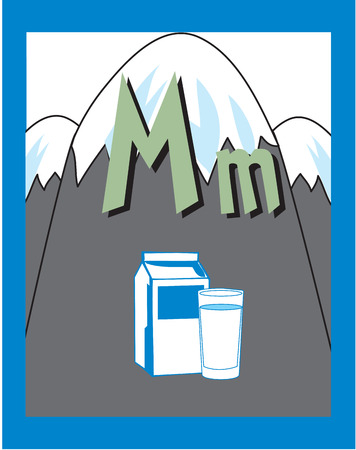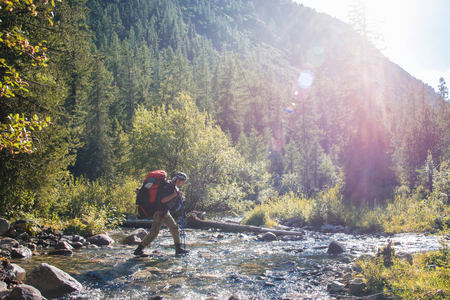Introduction: Why Quality Trail Food Matters
When you’re deep in the wilderness—whether trekking through the red rocks of Utah, summiting peaks in the Rockies, or winding your way along the misty trails of the Pacific Northwest—your backpacking food isn’t just fuel; it’s part of your adventure. The right freeze-dried and pre-packaged meals can be a game-changer, delivering essential calories, protein, and nutrients without weighing down your pack. In America’s vast and varied landscapes, carrying lightweight, high-calorie food is more than a convenience; it’s often a necessity for stamina and safety. Choosing quality trail food means you can push farther on long days, recover faster after big climbs, and actually enjoy mealtime under the stars. From deserts to alpine meadows, smart nutrition lets you focus on the beauty around you—not an empty stomach.
Top Freeze-Dried Meal Brands in the US
When it comes to backpacking across America’s wild landscapes, your choice of freeze-dried meals can make or break the experience. American hikers and campers swear by a handful of tried-and-true brands for their unbeatable combination of flavor, ease, and nutritional value. Here are some of the top names that keep showing up on trails from the Rockies to the Appalachian Trail:
| Brand | What Theyre Known For | Popular Options | Why Backpackers Love Them |
|---|---|---|---|
| Mountain House | Classic American comfort food, long shelf life | Beef Stroganoff, Chicken & Rice, Breakfast Skillets | Reliable taste, super-fast prep (just add hot water), trusted for decades |
| Backpacker’s Pantry | Global flavors, vegan & vegetarian options | Pad Thai, Kathmandu Curry, Three Sisters Stew | Diverse menu, caters to dietary needs, great calorie-to-weight ratio |
| Good To-Go | Chef-inspired recipes, clean ingredients | Herbed Mushroom Risotto, Thai Curry, Mexican Quinoa Bowl | No artificial additives, gluten-free choices, bold flavors with real veggies and grains |
| Peak Refuel | High protein content, hearty portions | Chicken Alfredo Pasta, Beef Stroganoff, Sweet Pork & Rice | Packed with calories and protein for big-mile days; filling and satisfying |
| Harmony House Foods | Bulk dehydrated ingredients for custom meals | Vegetable Sampler Packs, Soup Mixes | Great for DIY meal planners, lightweight bulk packs ideal for long hauls or group trips |
The American Backpacker’s Standard: What Sets These Brands Apart?
Each of these brands delivers something unique for US hikers. Mountain House is practically a household name in outdoor circles—think hearty dishes that remind you of home after a long day on the trail. Backpacker’s Pantry wins points for adventurous eaters who want global cuisine under the stars and need vegetarian or allergy-friendly options. Good To-Go stands out for foodies who crave real ingredients and bold flavors without the preservatives.
Nutritional Balance Meets Convenience
A key reason these brands top every US backpacker’s list is their commitment to balancing taste with nutrition. Meals are designed to refuel you efficiently—high in calories and protein but still lightweight enough for ultralight packs. Quick prep (often just adding boiling water) means more time enjoying mountain views instead of fussing over camp stoves.
The Real Test: Popularity on America’s Trails
If you ask thru-hikers on iconic routes like the Pacific Crest Trail or section-hikers exploring national parks coast to coast

3. Favorite Pre-Packaged Snacks and Trail Extras
When it comes to backpacking in the United States, certain classic snacks have earned their place in every hiker’s pack. These quintessential American trail foods are not only convenient and lightweight, but also provide the quick energy and nutrition needed for long days on rugged terrain.
Energy Bars: Portable Power
Energy bars are a staple for American backpackers. Brands like Clif Bar, KIND, and RXBAR dominate shelves with flavors ranging from peanut butter to chocolate chip. These bars pack a punch—combining carbs, protein, and healthy fats into an easy-to-carry package. Whether you’re pushing through a tough ascent or need a mid-morning boost, energy bars are a reliable go-to.
Jerky: Protein on the Go
Beef jerky—and its modern cousins made from turkey, bison, or even plant-based ingredients—are beloved for their rich flavor and long shelf life. Jerky offers a savory break from sweet snacks and delivers high-quality protein that helps muscles recover after strenuous hikes. Brands like Jack Link’s and Epic Provisions cater to both traditionalists and those looking for more adventurous options.
Nut Mixes: Trail Mix Traditions
No list of American trail snacks is complete without mentioning trail mix. This iconic blend of nuts, seeds, dried fruit, and sometimes chocolate has fueled generations of outdoor enthusiasts. It’s endlessly customizable, making it easy to tailor your mix for taste or dietary needs. The combination of fats, fiber, and sugar provides sustained energy over long distances.
Cheese: A Taste of Comfort
For those who crave something creamy and rich amid freeze-dried fare, individually packaged cheese rounds (like Babybel) or hard cheeses such as cheddar are favorites among American backpackers. Cheese adds both calories and flavor variety to your food kit—plus, it pairs perfectly with crackers or even jerky for an instant trailside picnic.
Integrating Snacks Into Your Backpacking Strategy
The key to successful backpacking nutrition is balance. Americans typically combine these snacks with freeze-dried meals to create a flexible menu that keeps energy levels steady throughout the day. Packing a mix of sweet and savory options ensures you’ll never tire of your food—and might just find a little joy at every summit snack break.
4. Diet-Specific and Allergen-Friendly Options
Backpacking should be accessible to everyone, regardless of dietary restrictions or food allergies. Fortunately, the United States market offers a growing range of freeze-dried and pre-packaged foods that cater specifically to vegetarians, vegans, gluten-free hikers, and those with common allergens like nuts, dairy, or soy. In this section, we’ll explore some of the best diet-specific options available so you can fuel your adventure without worry.
Vegetarian and Vegan Backpacking Meals
Vegetarians and vegans have more choices than ever before when it comes to lightweight, convenient backpacking food. Leading brands such as Good To-Go, Backpackers Pantry, and MaryJanesFarm offer plant-based meals with hearty flavors and satisfying nutrition. Whether you’re craving Thai curry or risotto, these companies deliver taste without compromise.
| Brand | Meal Example | Diet Type |
|---|---|---|
| Good To-Go | Herbed Mushroom Risotto | Vegan/Gluten-Free |
| Backpackers Pantry | Pad Thai (with Tofu) | Vegetarian/Vegan Option |
| MaryJanesFarm | Lentils, Rice & Indian Spice | Vegan/Gluten-Free |
Gluten-Free Choices for Hikers
If you follow a gluten-free diet due to celiac disease or sensitivity, options like Pinnacle Foods’ AlpineAire Gluten-Free meals, Wild Zora Paleo Meals To Go, and select entrees from Mountain House ensure you don’t have to sacrifice convenience on the trail. Always double-check packaging for certified gluten-free labels as recipes may change over time.
| Brand | Meal Example | Main Feature |
|---|---|---|
| AlpineAire Foods | Sierra Chicken Pasta (GF) | Celiac-Safe/High Protein |
| Wild Zora | Paleo Mountain Beef Stew | Paleo/Grain-Free/Gluten-Free |
| Mountain House (Select Items) | Bison Chili (GF) | No Wheat Ingredients/Certified GF Options Available |
Allergen-Friendly Picks: Nut-Free, Dairy-Free, Soy-Free Solutions
The US market has also responded to the needs of those with severe allergies by labeling major allergens and introducing specialty lines. Brands like Soylent Squared Bars (Soy-Free Version), Nutrient Survival Dairy-Free Meals, and The New Primal Meat Sticks (Nut-Free Facility) are great examples. Always read ingredient lists carefully—some manufacturers rotate facilities or suppliers.
| Brand/Product Line | Dairy Free? | Soy Free? | Nut Free? |
|---|---|---|---|
| Nutrient Survival Homestyle Scramble | Yes | No (Contains Soy) | Yes* |
| Soylent Squared Bar (Soy-Free Version) | Yes* | Yes* | No* |
| The New Primal Meat Sticks | Yes* | Yes* | Yes (Produced in Nut-Free Facility) |
A Few Tips for Finding Your Best Fit:
- Always check up-to-date allergen info on manufacturer websites.
- If traveling in a group, consider bringing single-serve packs to avoid cross-contamination.
- Your local outdoor retailer is often knowledgeable about new diet-friendly products on the market.
- If you have life-threatening allergies, pack extra snacks that you know are safe in case meal plans change.
Your Adventure, Your Nutrition – No Compromises Needed!
The beauty of exploring America’s wild spaces shouldn’t come at the expense of your health or values. With careful selection and planning—and thanks to innovative US-based brands—you can savor every summit and sunrise with meals that match your dietary needs.
5. Taste, Texture, and Real-World Testing
For seasoned backpackers trekking through the wilds of the United States—from the granite domes of Yosemite to the windswept Rockies—freeze-dried and pre-packaged foods are judged by far more than just their calorie count. After a long day on the trail, what matters most is how these meals taste, their texture, and how easy they are to prepare when energy is running low.
The Importance of Flavor After a Day Outdoors
American backpackers often joke that “hunger is the best seasoning,” but no one wants to choke down a bland, mushy meal when surrounded by mountain majesty. Brands that stand out in the U.S. market—like Mountain House, Backpacker’s Pantry, or Good To-Go—win loyal fans because their recipes pack real flavor. Whether it’s a spicy chili mac or a hearty chicken and rice, taste can be the difference between a forgettable dinner and a morale-boosting reward at camp.
Texture: Beyond Just Edible
Texture can make or break a meal in the backcountry. American hikers appreciate foods that rehydrate to something resembling real food—not just soupy mush or rubbery bits. Meals that offer satisfying bites—chewy grains, tender meats, crisp veggies—get high marks on forums and trail reviews across the country. The goal? Something that feels homemade after miles of wilderness wandering.
Simplicity and Convenience Matter
After logging ten-plus miles through Utah’s red rock canyons or along the Appalachian Trail, fiddling with complicated cooking steps isn’t on anyone’s agenda. U.S. backpackers overwhelmingly favor meals with straightforward preparation: just add hot water, wait a few minutes, and dig in. Extras like resealable pouches for “cook-in-bag” convenience are especially prized for keeping things tidy and easy in rugged conditions.
Testing Meals Where It Counts
Nothing beats real-world testing under American skies. Backpackers regularly swap recommendations based on how meals perform in actual conditions—at altitude, in cold weather, or after getting caught in a sudden downpour. The best freeze-dried and pre-packaged foods become legends not just for nutrition or price, but because they consistently deliver comfort, flavor, and fuel when it matters most—out there among America’s wild places.
6. Tips for Packing and Customizing Your Backpacking Menu
Strategic Meal Planning for the Trail
When planning your backpacking menu with the best freeze-dried and pre-packaged foods available in the United States, think beyond just calories. Start by mapping out each meal and snack for every day of your trip, keeping in mind your daily mileage, elevation gain, and weather conditions. A good rule of thumb: aim for 2,500–4,000 calories per day depending on exertion and climate. Mix quick breakfasts like instant oats or granola with heartier dinners such as freeze-dried chili or pasta. Don’t forget high-energy snacks—trail mix, jerky, and nut butter packets—to keep you fueled between meals.
Portion Control: Packing What You’ll Actually Eat
Overpacking food is a classic rookie mistake—every ounce counts when you’re climbing switchbacks in the Rockies or trekking through red rock canyons. Test different brands and serving sizes at home before hitting the trail; some “two-serving” pouches are really just right for one hungry hiker after a long day. Divide bulk items into zip-top bags to save weight and space, and label each meal clearly. For ultralight packers, consider repackaging meals without excess wrappers or boxes.
Personalizing Pre-Packaged Meals
Pre-packaged backpacking meals are convenient but don’t be afraid to add your own twist to make them more delicious and filling. Spice up a basic mac & cheese with hot sauce packets or dried veggies; toss in shelf-stable cheese or summer sausage to elevate a simple rice dish. Pack single-serve olive oil packets for extra calories and flavor. Some hikers love adding instant mashed potatoes to thicken soups or stews. Even something as simple as adding a handful of crushed tortilla chips can bring crunch and comfort after a big day in the wild.
Pro Tip: Pack Out What You Pack In
The Leave No Trace ethic is strong in America’s backcountry culture—always repackage food into reusable containers when possible, and pack out all wrappers and waste. Stash a dedicated trash bag (an odor-resistant one if you’re traveling in bear country) so you leave those mountain views as pristine as you found them.
Final Thoughts
The best freeze-dried and pre-packaged backpacking foods offer both convenience and nutrition, but smart planning and a bit of creativity will truly elevate your trail meals. With these tips, you’ll fuel your adventure efficiently while savoring every bite beneath America’s wide-open skies.

